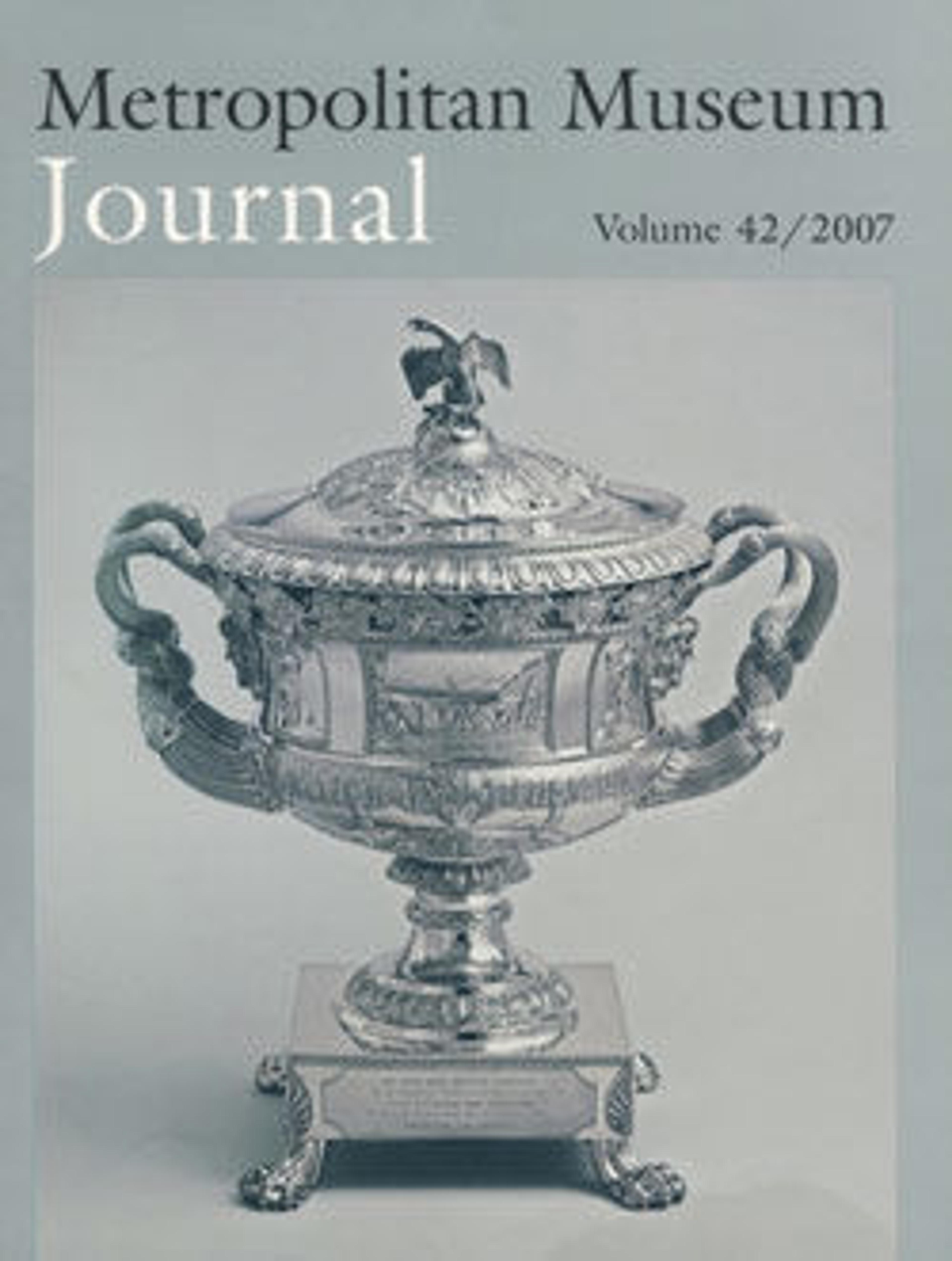Gold strap necklace with seedlike pendants
Gold strap necklace with seed-like pendants, part of the Madytos Jewelry.
This group of jewelry is said to have come from a tomb at Madytos on the European side of the Hellespont. The gold diadem is richly worked in repousse with an elaborate floral pattern. Dionysos, the god of wine, and his wife, Ariadne, sit in the center; muses playing musical instruments perch among the vines and along the sides. The tiny figure of a must playing a lyre also appears just above the crescent form on each of the boat-shaped earrings. The seedlike pendants of the earrings are identical to those on the elaborate necklace.
This group of jewelry is said to have come from a tomb at Madytos on the European side of the Hellespont. The gold diadem is richly worked in repousse with an elaborate floral pattern. Dionysos, the god of wine, and his wife, Ariadne, sit in the center; muses playing musical instruments perch among the vines and along the sides. The tiny figure of a must playing a lyre also appears just above the crescent form on each of the boat-shaped earrings. The seedlike pendants of the earrings are identical to those on the elaborate necklace.
Artwork Details
- Title: Gold strap necklace with seedlike pendants
- Period: Hellenistic
- Date: ca. 330–300 BCE
- Culture: Greek
- Medium: Gold
- Dimensions: H. 1 1/4 in.(3.2cm), W. 2.293oz. (3.2 cm, 65g); length 12 3/4 in. (32.3 cm); Length of terminals 13/16 in. (2 cm)
- Classification: Gold and Silver
- Credit Line: Rogers Fund, 1906
- Object Number: 06.1217.13
- Curatorial Department: Greek and Roman Art
More Artwork
Research Resources
The Met provides unparalleled resources for research and welcomes an international community of students and scholars. The Met's Open Access API is where creators and researchers can connect to the The Met collection. Open Access data and public domain images are available for unrestricted commercial and noncommercial use without permission or fee.
To request images under copyright and other restrictions, please use this Image Request form.
Feedback
We continue to research and examine historical and cultural context for objects in The Met collection. If you have comments or questions about this object record, please contact us using the form below. The Museum looks forward to receiving your comments.
